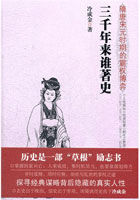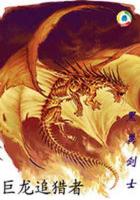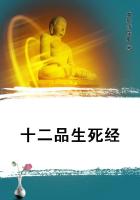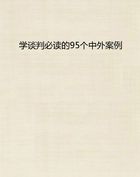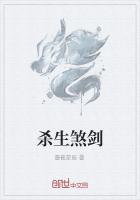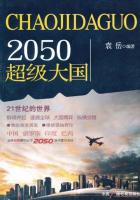According to his own statement, he devised the relay in 1836 or earlier; but it was not until the beginning of 1837 that he explained the device, and showed the working of his apparatus to his friend, Mr.
Leonard D. Gale, Professor of Chemistry in the University. This gentleman took a lively interest in the apparatus, and proved a generous ally of the inventor. Until then Morse had only tried his recorder on a few yards of wire, the battery was a single pair of plates, and the electro-magnet was of the elementary sort employed by Moll, and illustrated in the older books. The artist, indeed, was very ignorant of what had been done by other electricians; and Professor Gale was able to enlighten him. When Gale acquainted him with some results in telegraphing obtained by Mr. Barlow, he said he was not aware that anyone had even conceived the notion of using the magnet for such a purpose. The researches of Professor Joseph Henry on the electro-magnet, in 1830, were equally unknown to Morse, until Professor Gale drew his attention to them, and in accordance with the results, suggested that the simple electro-magnet, with a few turns of thick wire which he employed, should be replaced by one having a coil of long thin wire. By this change a much feebler current would be able to excite the magnet, and the recorder would mark through a greater length of line. Henry himself, in 1832, had devised a telegraph similar to that of Morse, and signalled through a mile of wire, by causing the armature of his electro-magnet to strike a bell. This was virtually the first electro-magnetic acoustic telegraph.[AMERICAN JOURNAL OF SCIENCE.]
The year of the telegraph--1837--was an important one for Morse, as it was for Cooke and Wheatstone. In the privacy of his rooms he had constructed, with his own hands, a model of his apparatus, and fortune began to favour him. Thanks to Professor Gale, he improved the electro-magnet, employed a more powerful battery, and was thus able to work through a much longer line. In February, 1837, the American House of Representatives passed a resolution asking the Secretary of the Treasury to report on the propriety of establishing a system of telegraphs for the United States, and on March 10 issued a circular of inquiry, which fell into the hands of the inventor, and probably urged him to complete his apparatus, and bring it under the notice of the Government. Lack of mechanical skill, ignorance of electrical science, as well as want of money, had so far kept it back.
But the friend in need whom he required was nearer than he anticipated.
On Saturday, September 2, 1837, while Morse was exhibiting the model to Professor Daubeny, of Oxford, then visiting the States, and others, a young man named Alfred Vail became one of the spectators, and was deeply impressed with the results. Vail was born in 1807, a son of Judge Stephen Vail, master of the Speedwell ironworks at Morristown, New Jersey. After leaving the village school his father took him and his brother George into the works; but though Alfred inherited a mechanical turn of mind, he longed for a higher sphere, and on attaining to his majority he resolved to enter the Presbyterian Church. In 1832 he went to the University of the city of New York, where he graduated in October, 1836. Near the close of the term, however, his health failed, and he was constrained to relinquish his clerical aims. While in doubts as to his future he chanced to see the telegraph, and that decided him.
He says: 'I accidentally and without invitation called upon Professor Morse at the University, and found him with Professors Torrey and Daubeny in the mineralogical cabinet and lecture-room of Professor Gale, where Professor Morse was exhibiting to these gentlemen an apparatus which he called his Electro-Magnetic Telegraph. There were wires suspended in the room running from one end of it to the other, and returning many times, making a length of seventeen hundred feet. The two ends of the wire were connected with an electro-magnet fastened to a vertical wooden frame. In front of the magnet was its armature, and also a wooden lever or arm fitted at its extremity to hold a lead-pencil.... I saw this instrument work, and became thoroughly acquainted with the principle of its operation, and, I may say, struck with the rude machine, containing, as I believed, the germ of what was destined to produce great changes in the conditions and relations of mankind. Iwell recollect the impression which was then made upon my mind. Irejoiced to think that I lived in such a day, and my mind contemplated the future in which so grand and mighty an agent was about to be introduced for the benefit of the world. Before leaving the room in which I beheld for the first time this magnificent invention, I asked Professor Morse if he intended to make an experiment on a more extended line of conductors. He replied that he did, but that he desired pecuniary assistance to carry out his plans. I promised him assistance provided he would admit me into a share of the invention, to which proposition he assented. I then returned to my boarding-house, locked the door of my room, threw myself upon the bed, and gave myself up to reflection upon the mighty results which were certain to follow the introduction of this new agent in meeting and serving the wants of the world. With the atlas in my hand I traced the most important lines which would most certainly be erected in the United States, and calculated their length. The question then rose in my mind, whether the electro-magnet could be made to work through the necessary lengths of line, and after much reflection I came to the conclusion that, provided the magnet would work even at a distance of eight or ten miles, there could be no risk in embarking in the enterprise. And upon this Idecided in my own mind to SINK OR SWIM WITH IT.'






